Words by Andy Murray. In his latest sports column for us, Andy Murray takes a look at the story behind the Olympic power couple. Both athletes in the Czech team in Helsinki’s 1952 Olympic Games, Dana Zatopek won her first gold in the women's javelin throw, just one hour after her husband won the men's 5,000 metre run.
Emil Zatopek and Dana Zatopkova: how a husband-and-wife team won four Olympic gold medals at the 1952 Games.
Winning one Olympic gold medal is a life-changing event, the culmination of a lifetime’s sacrifice and suffering distilled into one race, one throw, one jump, one moment of cosmic perfection. The talent, will and self-denial necessary to be the best of the best on the greatest stage is a feeling few athletes are privileged to experience. They are elite, extraordinary examples of human endeavour.
Imagine, then, what it must be like to win two Olympic golds. Or three – perhaps, even, at the same Games. And what about if your significant other also won gold? That would be impossible, right?

At the 1952 Olympics, Emil Zatopek and Dana Zatopkova achieved the impossible. Four years earlier in London, Emil had won the 10,000m and proposed to his future wife, but in Helsinki he became the only person to win an unprecedented long-distance hat-trick: the 5,000m, 10,000m and marathon at the same Olympics. A matter of minutes after Emil had crossed the line to take the 5,000m – the second gold of his hat-trick – wife Dana won the women’s javelin.

Zatopek was unique. Born into poverty in Czechoslovakia on 19 September 1922 – the same day as Dana – a 16-year-old Emil began working at the Bata shoe factory in Zlin, where he was picked at random by the plant’s sports coach to run in a local race. Zatopek finished second in a field of 100.
Eventually conscripted into the army to keep running during the Second World War, Zatopek’s path to immortality was the result of notoriously brutal training methods and sheer bloody-mindedness.

Zatopek didn’t invent interval training, but it was through the Czech’s prodigious talent – and a total of 18 world records – which convinced the long-distance running intelligentsia to almost instantly reclassify Zatopek from fool to genius in the late 1940s.
By the mid-1950s, he was doing up to 100 fast 400m laps a day, with 150m jogs in between. In the months building up to the 1952 Games, Zatopek went wading through chest-high snow, much to the bemusement of onlookers, as much to train his mind to endure the extreme physical punishment inherent in long-distance running. He existed in an almost altered state where the pain no longer existed. “Pain is a merciful thing,” he once explained. “If it lasts without interruption, it dulls itself.”
He was, however, no masochist, just a garrulous multi-lingual realist beloved by fans and contemporaries alike who knew if he worked harder than everyone else, success was within reach. This despite an idiosyncratic gait which resembled an octopus in its death throes, his face rolling from side to side and frequently contorted with pain.
“I was not talented enough to run and smile at the same time,” he once said.


Zatopek’s first gold in 1952 came in the 10,000m, where he was the defending champion, the first person to run under 30 minutes and unbeaten for six years. The Czech finished in 29 minutes 17 seconds, an Olympic record, in one of the quickest races ever over the distance. So savage was Zatopek’s unusually consistent pace, six men broke 30 minutes, an achievement only eight had managed in history until that point.

The 5,000m was what he really coveted, though. Four years earlier in London, Zatopek had kicked too late, only to be beaten by Gaston Reiff despite having gas left in the tank.
When, the day before the final, it was confirmed that the women’s javelin would begin shortly after the 5,000m, Emil was delighted. Husband and wife trained together, he reasoned, so they may as well compete for gold medals together. Dana was less convinced.
“But I can’t concentrate if you’re racing,” she responded, as recounted in Rick Broadbent’s superb Zatopek biography, Endurance. “That’s as it should be,” winked Emil. “A wife must think of her husband, after all.” A furious Dana walked away, Emil eventually catching her up and apologizing with a walk in the woods and an apology of a freshly picked wild strawberry.
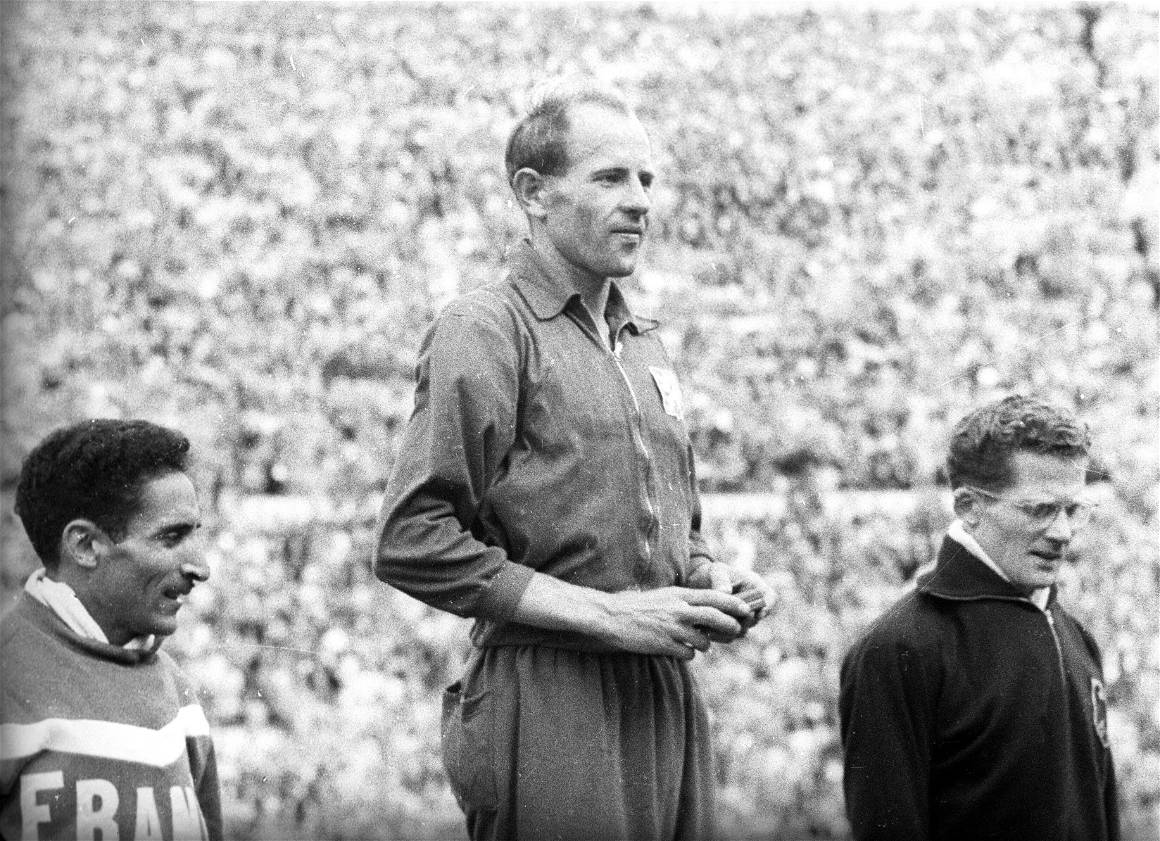
The German Herbert Schade was the 5,000m favorite, as many doubted Zatopek’s recovery powers in winning the 10,000m. Reiff, the fastest man in the world that year, was defending his crown with British challenge coming from Chris Chataway and Gordon Pirie, and 10,000m silver medalist Mimoun also in the picture.
Schade was determined to run from the front despite the oppressive heat. Halfway through the race, Zatopek went alongside Schade to share the frontrunner duties, but the German mistook altruism for avarice and sped on, only to be caught by the five medal hopefuls. At the bell, Zatopek led, but was almost immediately passed by Chataway, Mimoun and Schade “as if they had all agreed their medals before and I might as well go home”.
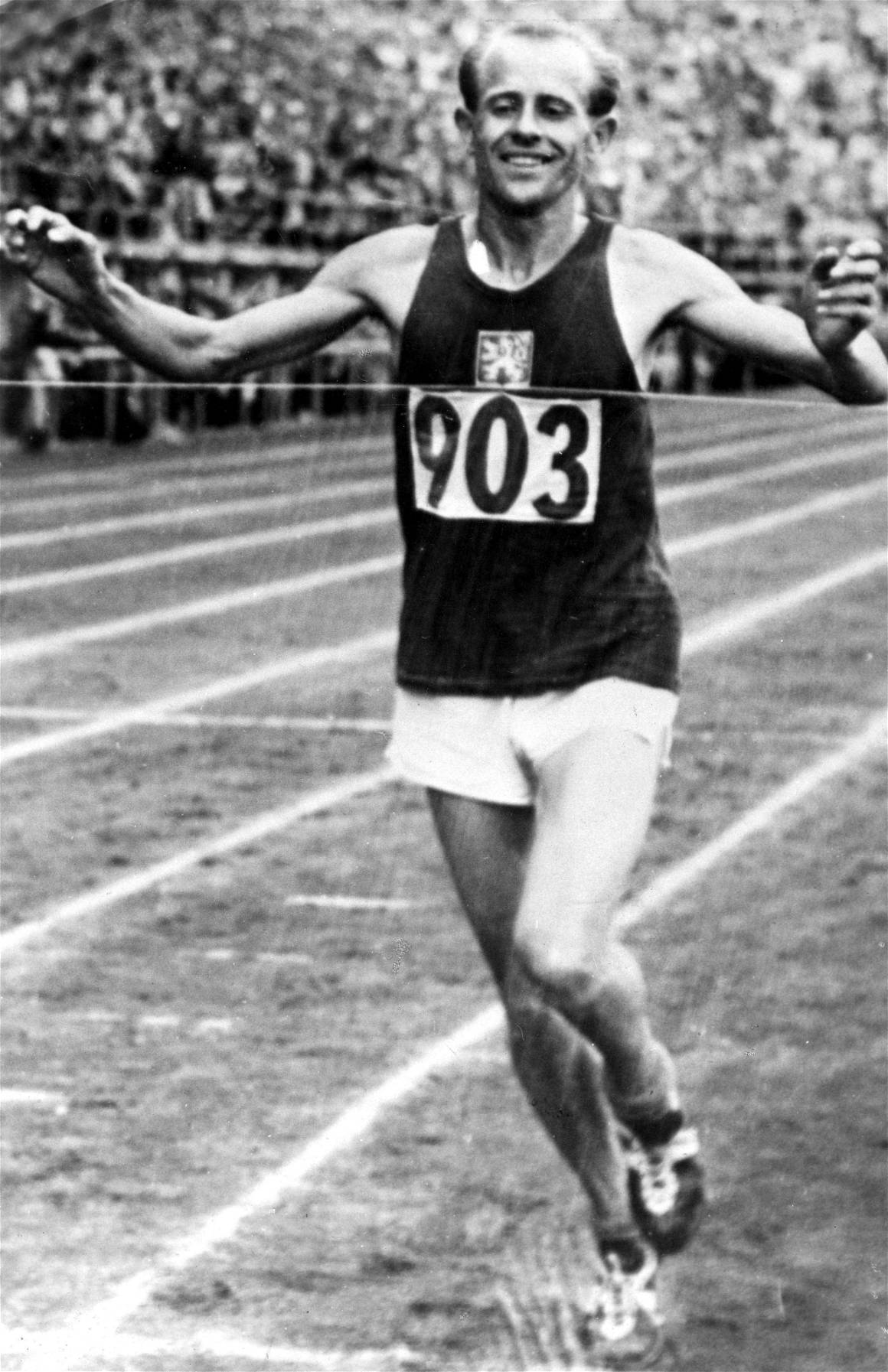
Had he gone too soon? With 200m to go, Zatopek got a second wind. He eased to the front, putting the pressure on leader Chataway to such an extent the Brit kissed the inside ridge of the track on the last bend and fell, grasping desperately at the Czech Locomotive disappearing from the station in one of the most iconic images in Olympic history.
Contorted ever more violently, Zatopek pumped his legs and crossed the line in 14 minutes 6.6 seconds, a second Olympic record and 11 seconds faster than he had run in 1952. He had run the final kilometer in 2 minutes 41 seconds and the final lap in an equally stunning 57.9 seconds. Mimoun again took silver, Schade bronze.

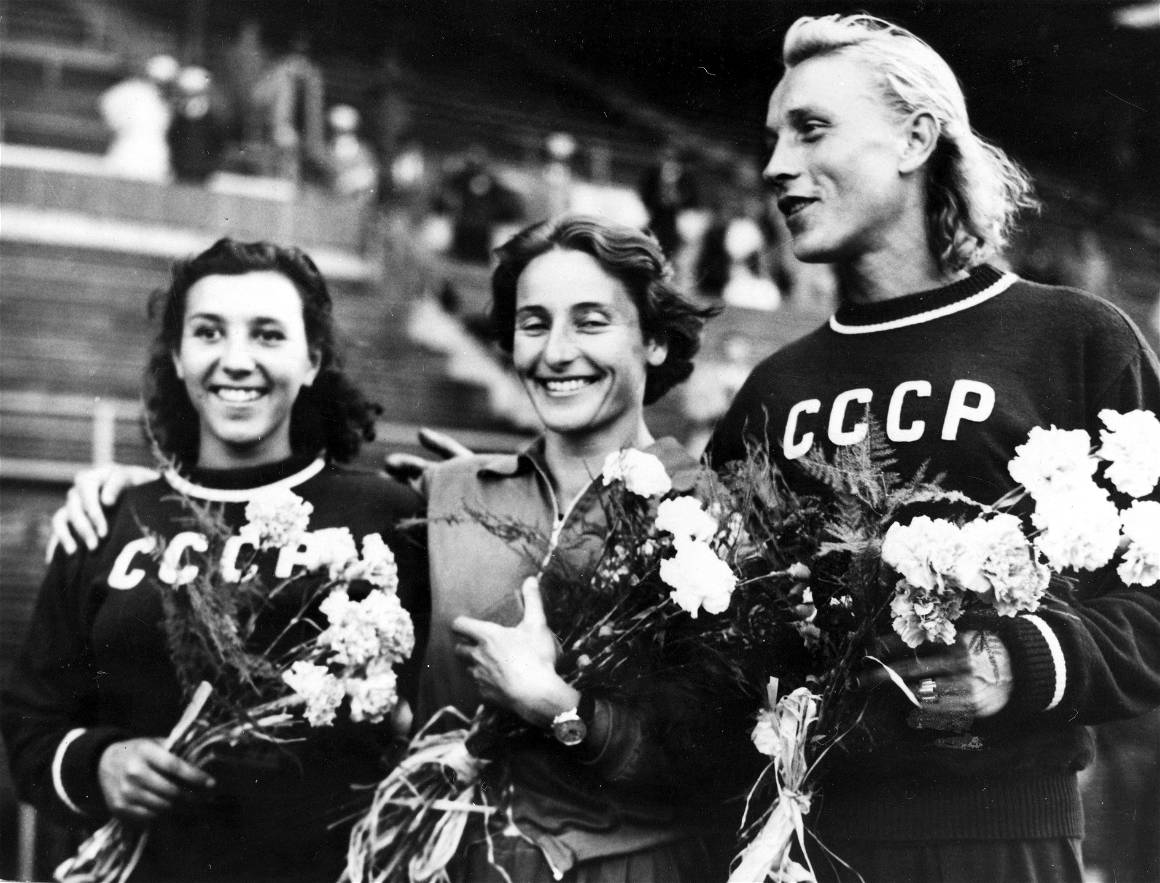
The javelin had been delayed and Dana was only just entering the stadium. They bumped into each other outside the stadium, Emil giving his wife his gold medal for good luck just before he was deluged with autograph hunters. Not that she needed it.
A matter of minutes later, she threw 50.47m in the first round, a third Olympic record for the husband-and-wife duo. “It’s all down to me,” Emil joked after Dana’s medal ceremony. “With my victory you got so fired up that in your enthusiasm you threw two meters further.”
A miffed Dana replied: “Well, go and inflame some young girl since you’re so clever. See if her enthusiasm can make her throw 50m.”
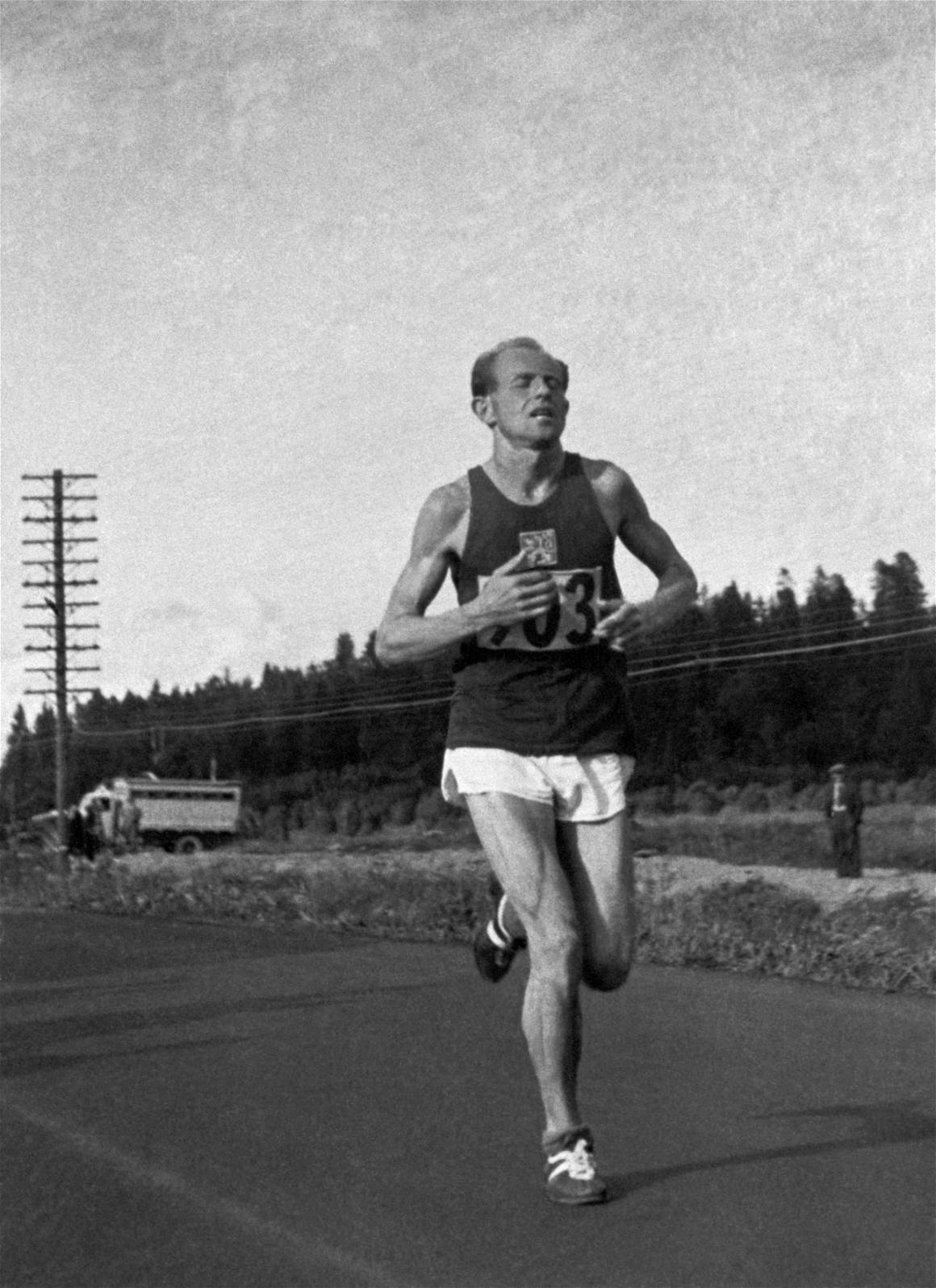
Three days later was the marathon and Emil announced his intention to run an event in which he had never previously competed, if only to give him the chance of going 3-1 ahead in his personal medal haul with his wife.
The marathon was still viewed as the most dangerous Olympic event. Runners often collapsed at the exertion, and many doubted whether humans should be allowed to run that distance. Zatopek, though, wasn’t worried about the distance, but whether he could check his natural desire to run fast, and not run out his kick.
His tactics were simple – attach himself to British world record holder Jim Peters and go from there. The only problem was, he didn’t know what Peters looked like, so looked out for the athlete wearing No187 on the start line.
Peters was alone for the first 10km, Zatopek and Gustaf Jansson of Sweden eventually reeling him in as the Brit heeded his coach’s advice to take it steady. Just before halfway, Zatopek, still unsure of how a marathon should feel, asked Peters: “The pace? Is it good enough?”
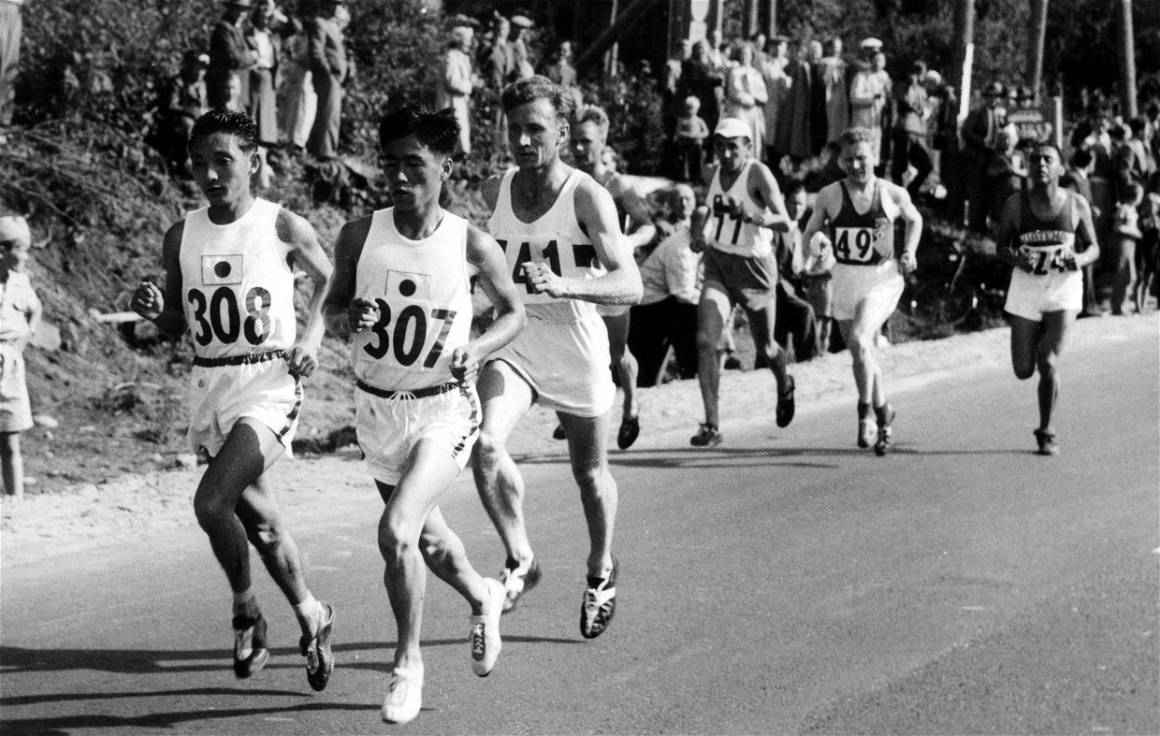
“Pace too slow,” wheezed Peters, determined not to show any weakness despite straining every sinew to keep up.
“Are you sure?” Zatopek replied.
Zatopek took Peters at his word and pressed the accelerator, condemning Peters to a 150-yard gap at 15 miles. Five miles later, Peters had to admit defeat.
Refusing drinks and sugary lemons en route, Zatopek reached the Olympic stadium in the lead. He crossed in 2 hours 32 minutes 3.2 seconds, another Olympic record. When Reinaldo Gorno of Argentina entered the stadium to take silver 2 minutes, 1 second later, Zatopek had already been lifted onto the shoulders of the Jamaican 4x400m relay team.
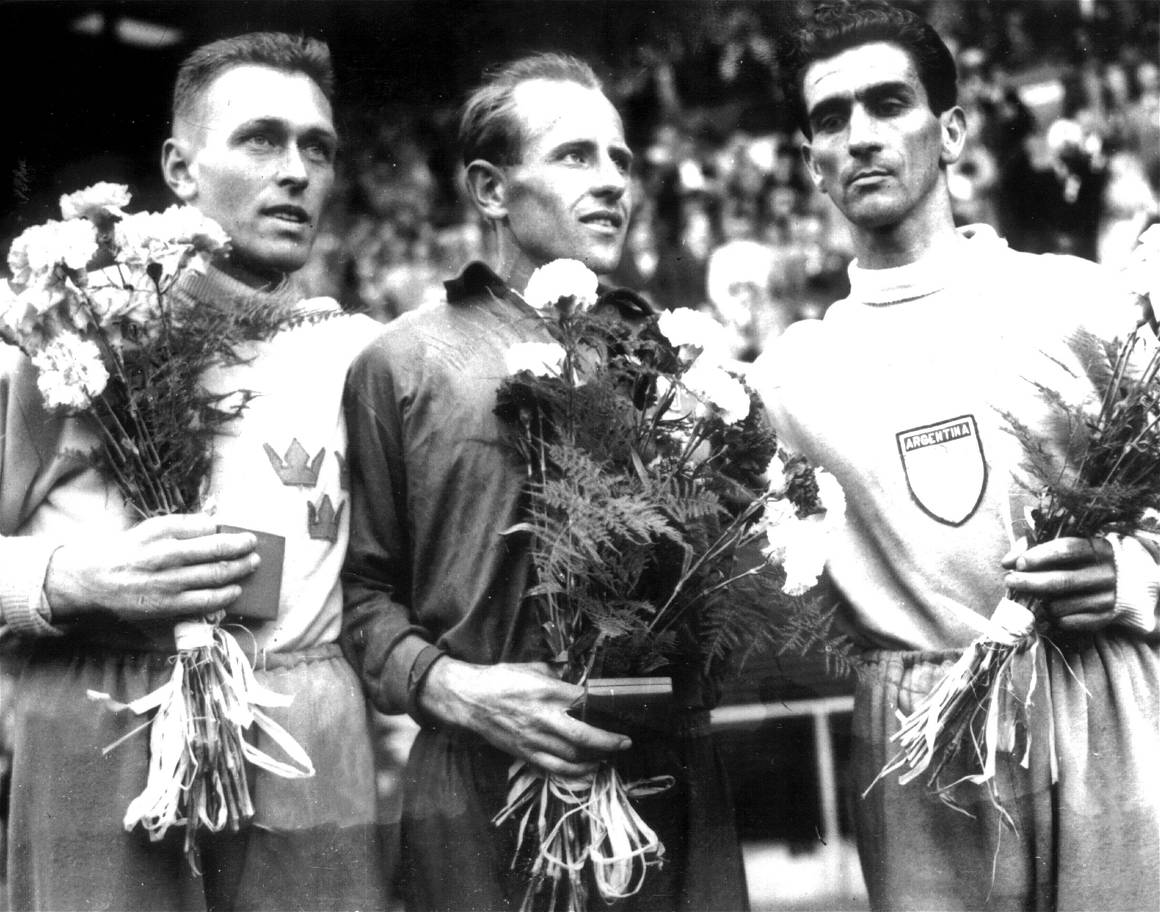
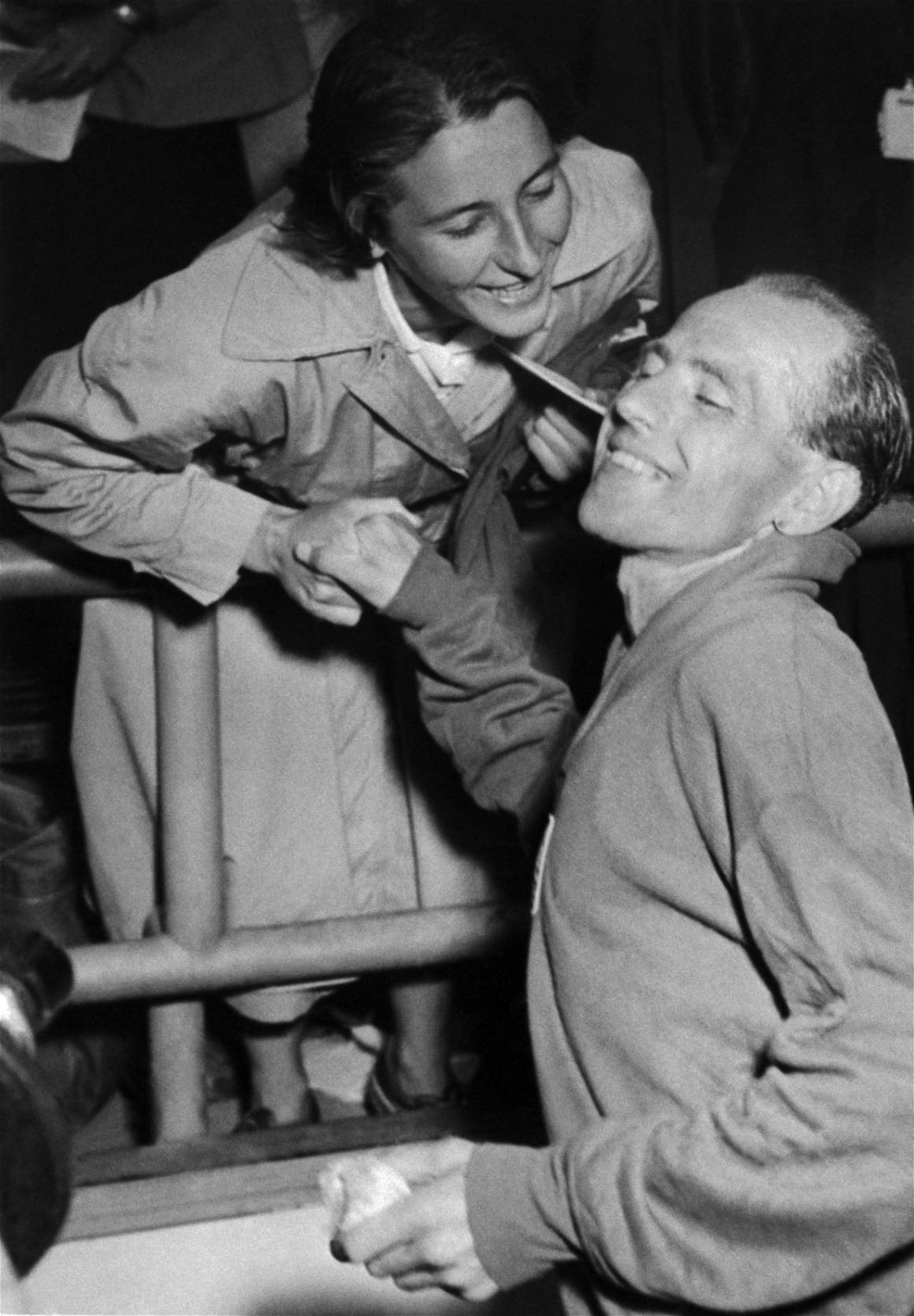
“At the finish line I even smiled happily and opened my arms, as if to embrace the minute tape I’d slaved for 42km,” he said. “By a miracle I held back the tears because it was beautiful, but perhaps I knew that never again would I live such beautiful moments.”

He wasn’t wrong. A passionate follower of the ‘Communism with a human face’ philosophy of the liberal then-Czechoslovak government, the Soviet-led uprising of the 1968 Prague Spring forced the country’s greatest athlete into a life as laborer miles from the capital. Emil was lucky if he saw Dana once a year. Eventually allowed to return to Prague in a menial pencil-pushing job in the country’s Union of Physical Education if he renounced his liberal past, Zatopek finally rejoined to Dana in 1977 but it took for the fall of communism in the Czechoslovakia in the Velvet Revolution of December 1989 for his status as bona fide national hero to be restored.
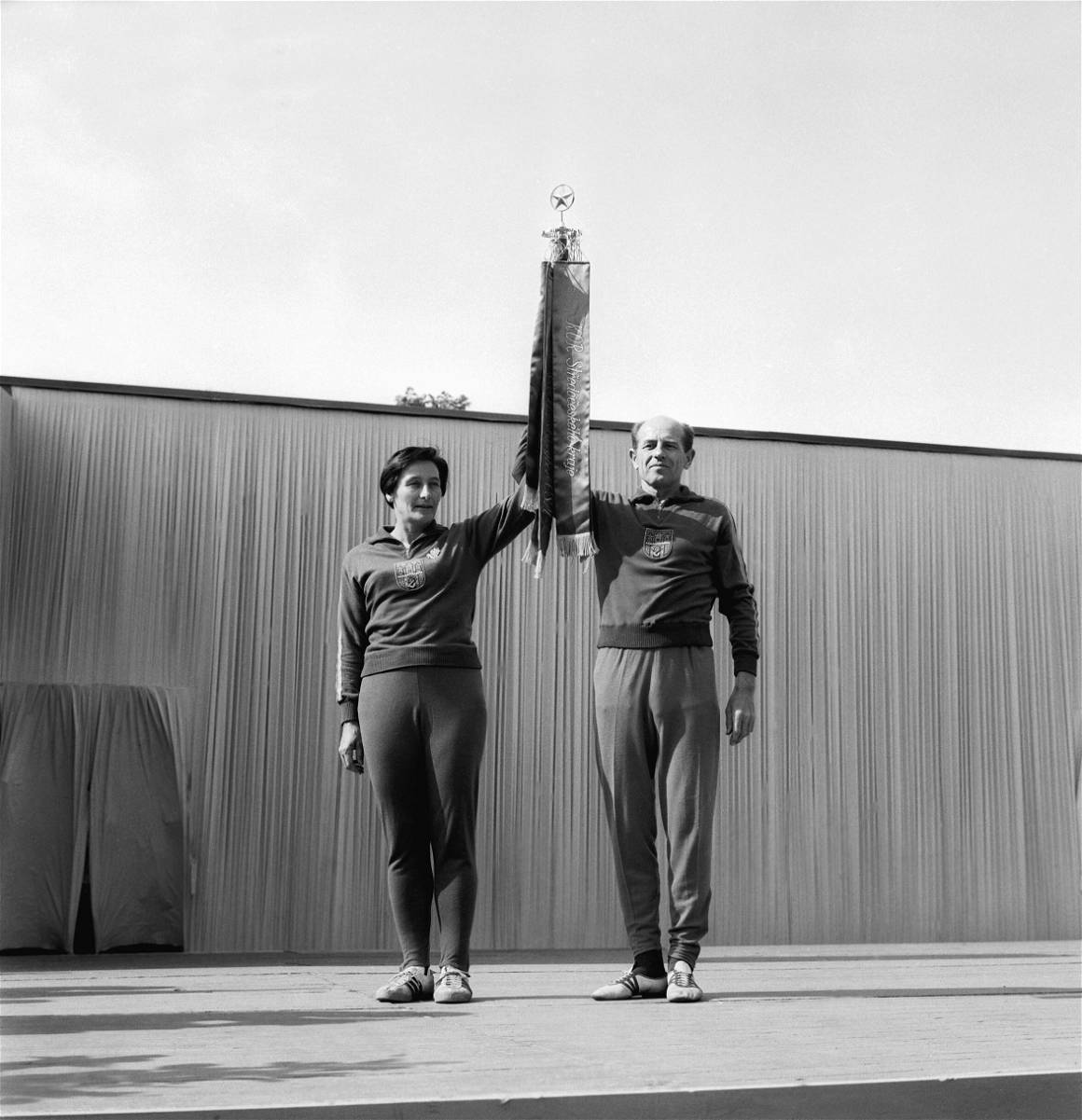

Outside his homeland, however, Zatopek’s revered status has never wavered. In 1975, while he was still out of favor with the Communist Party, he received the Pierre de Coubertin medal for sportsmanship and in 2012 was one of the first 12 athletes inducted into the IAAF’s Hall of Fame, alongside such greats as Jesse Owens, Jackie Joyner-Kersee and Zatopek’s own hero, the Flying Finn Paavo Nurmi.
At the Rio Olympics in 2016, 16 years after Emil’s death and four years before Dana passed away in March 2020, a little squiggle adorned the Czech track team’s kit. Provided from Dana’s archives, it was a flourish which formed part of the great Emil Zatopek’s signature and, with that, athletics’ great husband and wife had achieved immortality.
Andy Murray is a sports writer and columnist for The Game. Check out some of his other articles with us that feature both in our mag and in the most recent zine issue FANsided.


